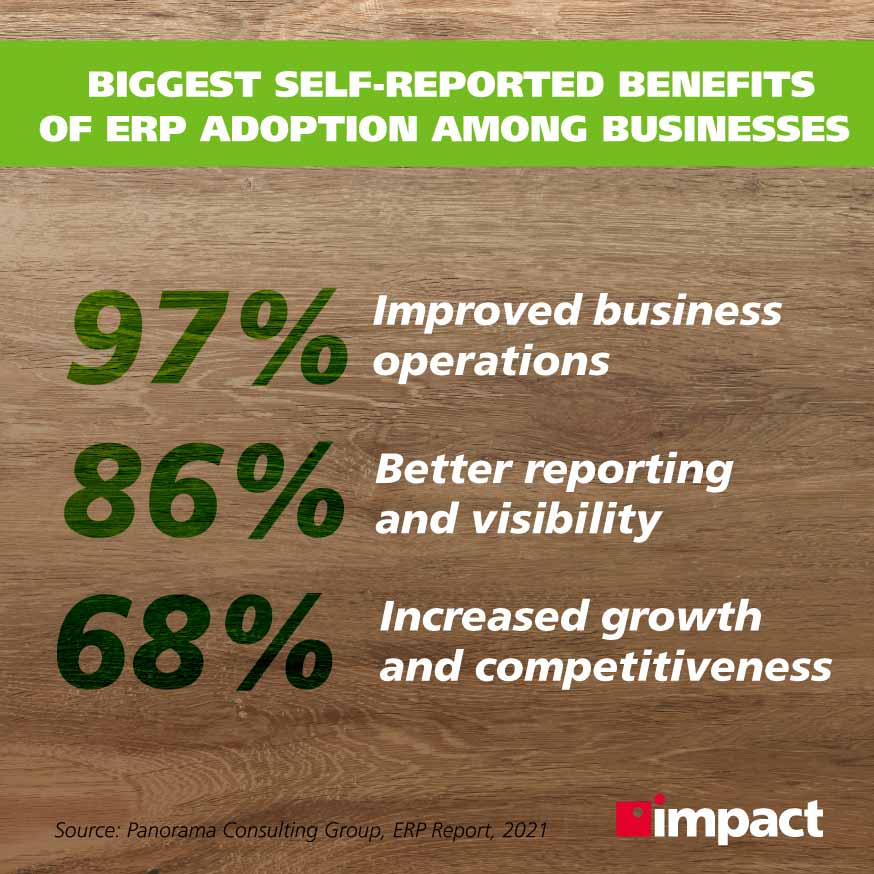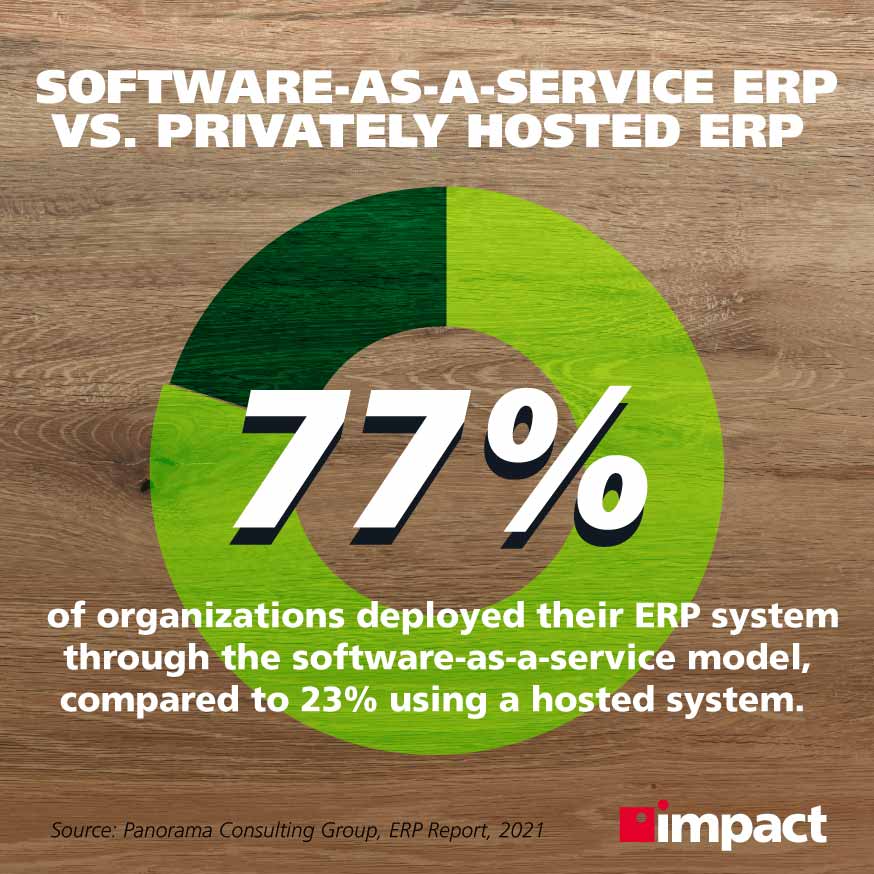Take a look at these ERP stats for 2021 to get a thorough understanding of the direction, challenges, and benefits that businesses are experiencing in modern enterprise resource planning implementations.
ERP systems are increasingly becoming a central aspect of business operations.
As an organization’s ability to leverage their data becomes the key differentiator between businesses, adopting systems that can unify operations across departments and provide a centralized repository for data from which to analyses can be made is crucial today.
This is where enterprise resource planning systems come in, and companies have been implementing these solutions in significant numbers over the last 10 (and particularly five) years.
Related Post: The Future of Business Intelligence
The purpose of this ERP stats and facts blog is to give an indication of what the market looks like, what business priorities are, and what kind of setups are being favored by organizations today.
- The global market for ERP was valued at $33.6 billion in 2017 and is expected to be worth $47.9 billion in 2023.
- Employees at distributions companies are most likely to actively use an ERP system (45% of employees), followed by e-Commerce (44%), and professional services (43%).
- Despite this, the manufacturing industry leads the way in ERP adoption (34% share), followed by IT organizations (15%), and professional and financial services (14%).
- Accounting was the most sought-after feature of an ERP system, with 57% of businesses requiring it in their system.
- The average cost of a Dynamics 365 implementation is around $410K, compared to $1.9 million for Oracle.
- When asked in a survey how ERPs helped their operations the most, organizations were in most agreement that their ERP “allows co-creation of new applications using data and business logic from different departments.”
- For businesses that choose to partner with a managed service provider for their IT services, the most important attribute expected from an MSP was their ability to bring “innovative ideas of how to use IT to create business value through their ERP.”
- 37% of organizations customize between 26%–50% of the code in their ERP system, suggesting companies are opting for personalized solutions to a greater degree today.
- As far as organizational improvements are concerned, just 5% of businesses say that ERP did not improve their processes, with 49% stating they improved all business processes and 46% stating they improved their key processes.
- The principle reasons among businesses for implementing ERP were to increase efficiency (25% of businesses), support growth (20%), allow for greater functionality (20%), consolidate disparate systems (10%), and replace legacy software (9%).
- Operational efficiency is by far the clearest benefit of ERP implementation, with 97% reporting benefits to their operations thanks to their new system. This was followed by 86% stating better reporting and visibility and 68% noting increased growth and competitiveness.
- Business objectives for implementing ERP varied depending on the size of the company. Businesses with fewer than 50 employees valued supporting growth as the most important aspect of adoption (26%). For businesses with 50–249 employees, it was increasing efficiency (27%) while for businesses with more than 250 employees better functionality was the most important thing (22%).
Subscribe to our blog to receive monthly insights into business technology and stay up to date with marketing, cybersecurity, and other tech news and trends.


